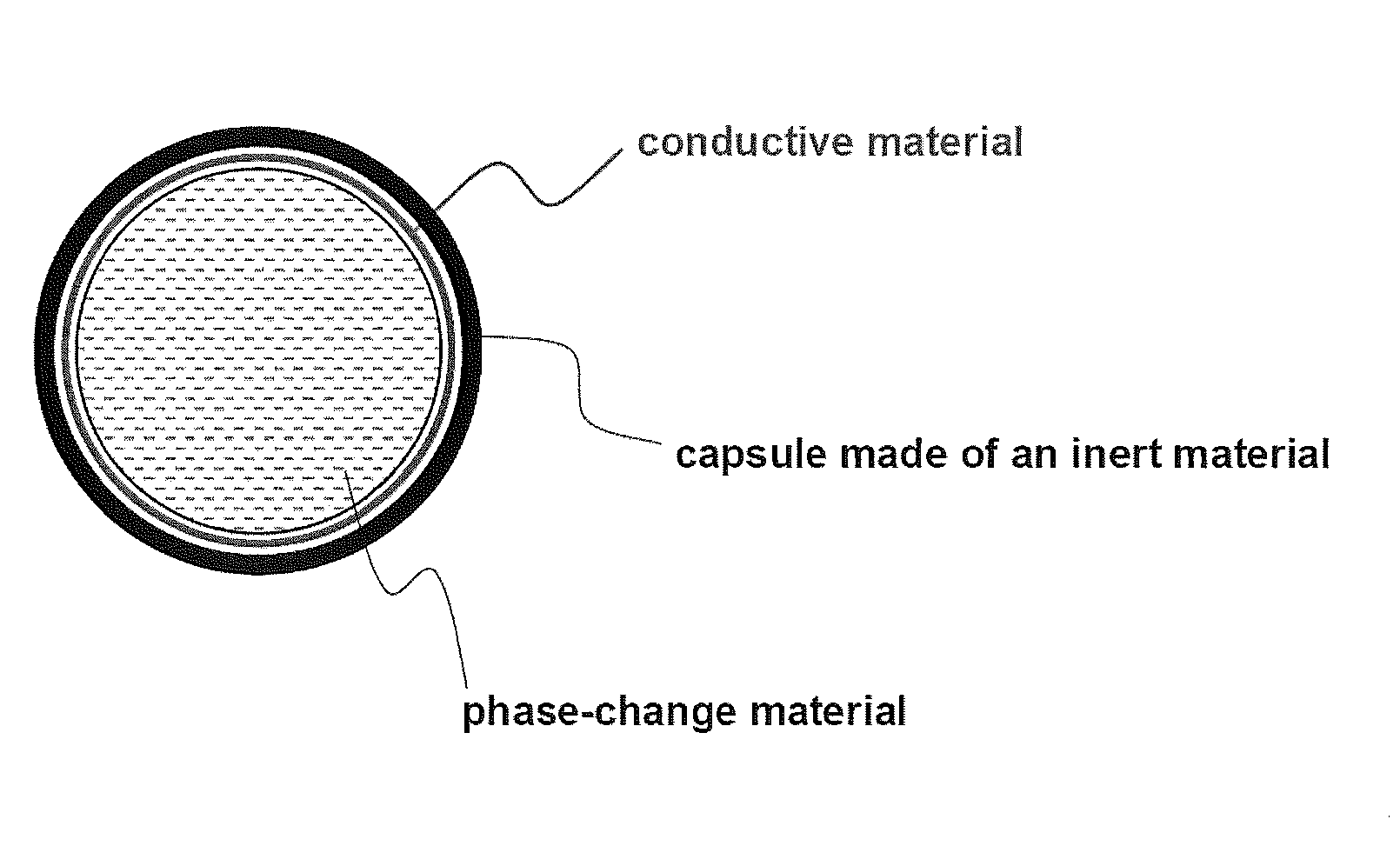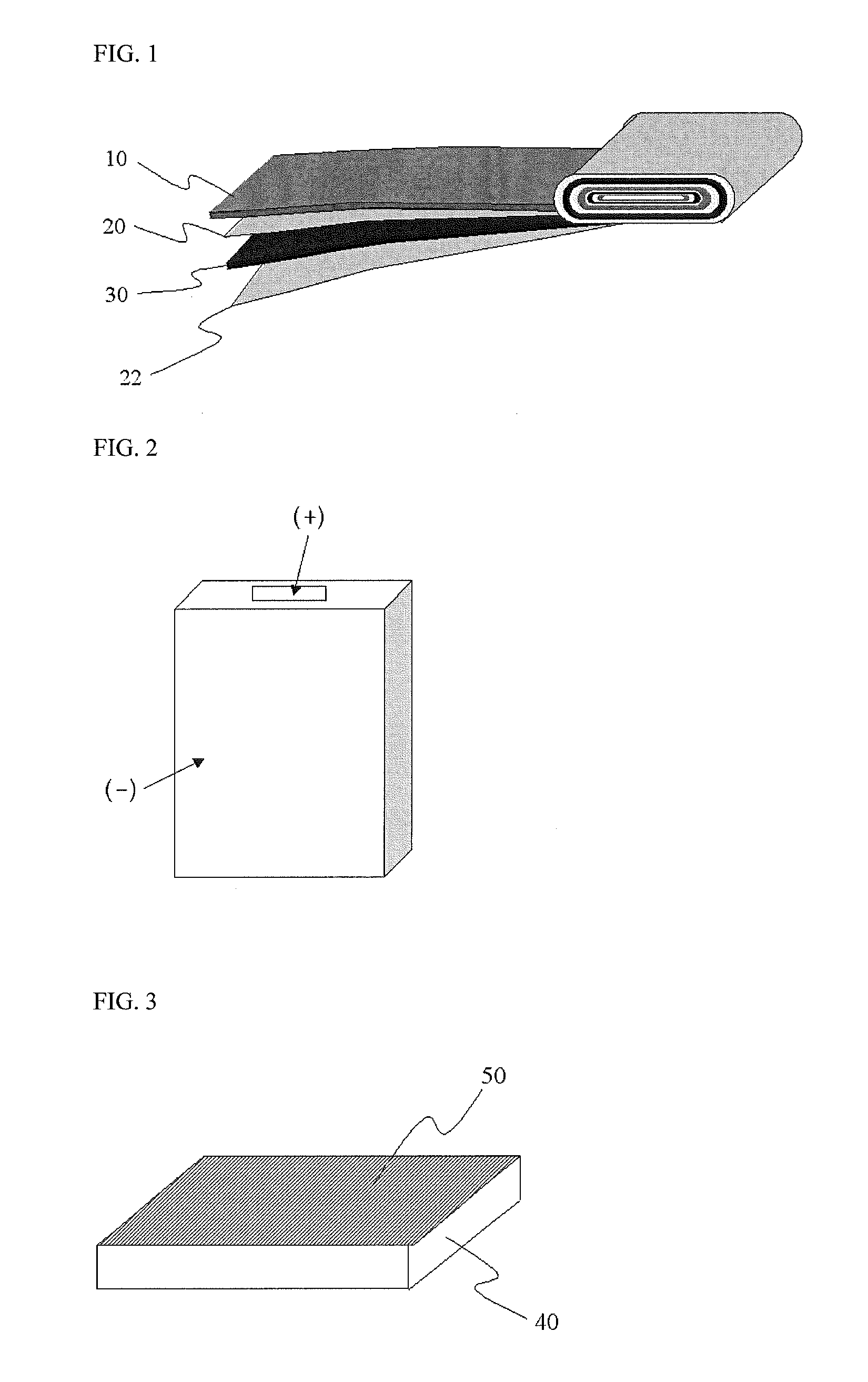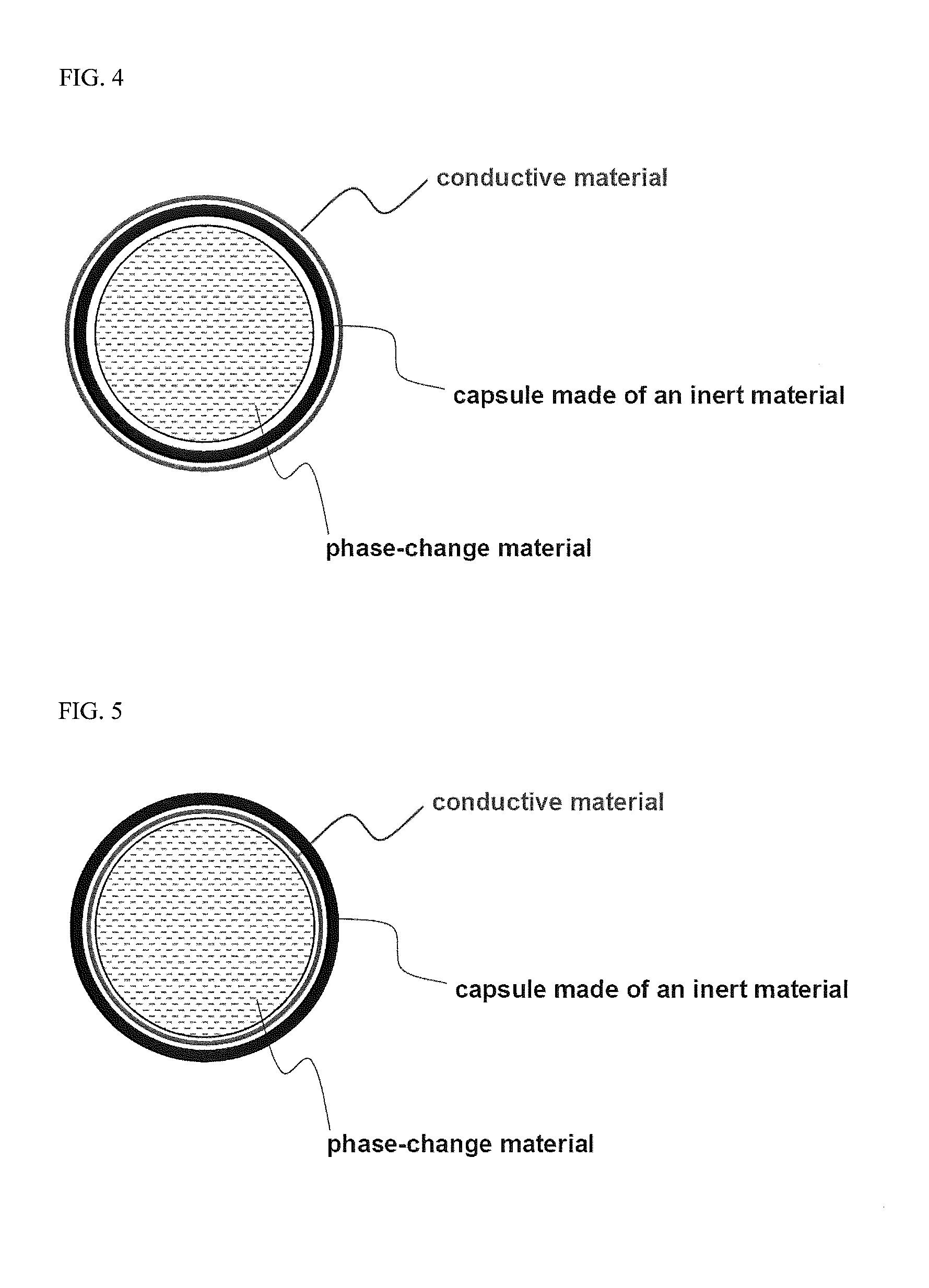Battery system containing phase change material-containing capsules in interior configuration thereof
- Summary
- Abstract
- Description
- Claims
- Application Information
AI Technical Summary
Benefits of technology
Problems solved by technology
Method used
Image
Examples
example 1
1-1. Preparation of Cathode
[0043]93% by weight of LiCoO2 as a cathode active material, 2% by weight of phase-change particles, 2.5% by weight of Super-P (a conductive agent) and 2.5% by weight of PVDF (a binder) were added to NMP (N-methyl-2-pyrrolidone) as a solvent, thereby preparing a cathode mixture slurry, and the resulting slurry was coated on an aluminum current collector to prepare a cathode. The phase-change particles (available from ENET Co., Ltd., Korea) contain encapsulated, saturated paraffinic hydrocarbon having a melting point of 58° C., as a phase change material. Latent heat of the phase-change particles was 145 J / g, based on the dry weight of the microcapsule.
1-2. Preparation of Anode
[0044]95.3% by weight of artificial graphite as an anode active material, 0.7% by weight of Super-P (a conductive agent) and 4% by weight of PVDF (a binder) were added to an NMP solvent, thereby preparing an anode mixture slurry, and the resulting slurry was coated on a copper current ...
example 2
[0047]A battery was prepared using the same procedure as in Example 1, except that surfaces of phase-change particles were coated with carbon, and the content of carbon-coated phase-change particles used was 2.1% by weight and the content of Super-P (a conductive agent) was 2.4% by weight. Since the phase-change particles practically used were coated with 5% by weight of carbon, the content of phase-change particles alone was 2% by weight and the total content of conductive agent was 2.5% by weight when a slurry was prepared having the above-mentioned composition. Therefore, conditions for preparing the battery in this example are substantially identical to those of Example 1.
example 3
[0048]A battery was prepared using the same procedure as in Example 1, except that phase-change particles were added to a separator instead of a cathode active material and the content of the cathode active material LiCoO2 was 95% by weight.
PUM
 Login to View More
Login to View More Abstract
Description
Claims
Application Information
 Login to View More
Login to View More - R&D
- Intellectual Property
- Life Sciences
- Materials
- Tech Scout
- Unparalleled Data Quality
- Higher Quality Content
- 60% Fewer Hallucinations
Browse by: Latest US Patents, China's latest patents, Technical Efficacy Thesaurus, Application Domain, Technology Topic, Popular Technical Reports.
© 2025 PatSnap. All rights reserved.Legal|Privacy policy|Modern Slavery Act Transparency Statement|Sitemap|About US| Contact US: help@patsnap.com



